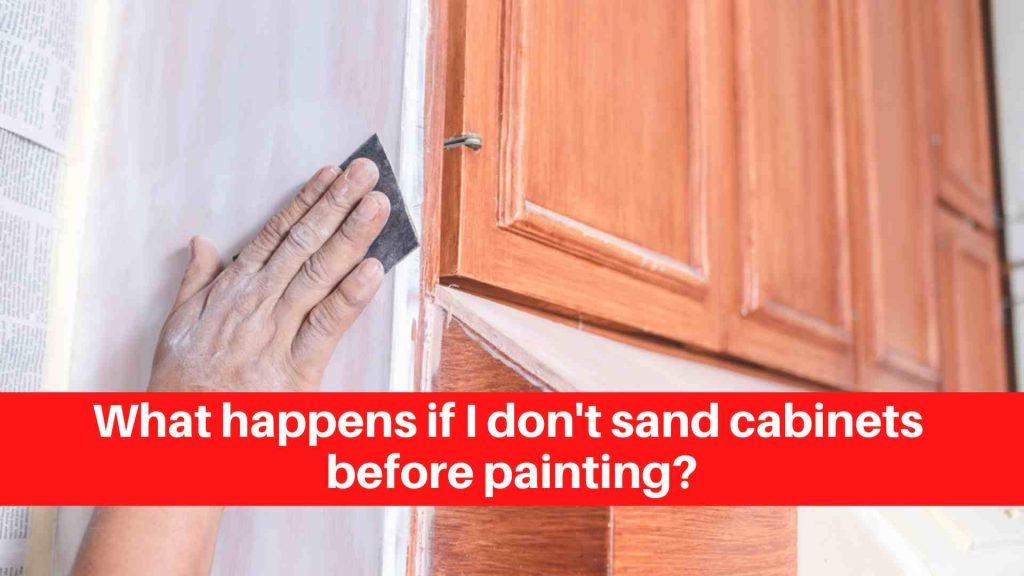What happens if I don’t sand cabinets before painting?

The Risks and Benefits of Not Sanding Cabinets Before Painting
One of the most common mistakes homeowners make is not sanding their cabinets before painting. In this article, we’ll look at the risks and benefits of not sanding your cabinets before painting them. By the end of this article, you will have a much better understanding of the importance of sanding cabinets before painting and what to do if you don’t have the time or inclination to do it yourself.
What are the Consequences of Not Sanding Cabinets Before Painting?
If you don’t sand the cabinets before painting, you run the risk of staining the finish and creating an uneven surface. Sanding reduces the likelihood of water spots and peeling paint. Furthermore, rough edges caused by not sanding can cause chipping or damage to the cabinet’s finish over time. To avoid these risks, it is usually better to sand the cabinets before painting.
When it comes to painting cabinetry, the last thing you want is for the paint to stick to the old, dried-on dirt and grime. This can lead to problems in the future, not only with paint peeling or chipping but also with wood decay in your cabinets. Here’s why sanding the cabinet before painting is so important:
1. It removes all of the accumulated dirt and dust.
2. It prepares the surface for a good coat of paint.
3. It reduces the amount of time required for complete coverage.
4. It reduces the possibility of paint bubbling and cracking.
5. It keeps your cabinets looking new for years to come!
Guidelines for Getting a Smooth Finish Without Sanding
If you decide to paint without sanding, follow these guidelines to ensure a smooth finish:
1) Use a primer made for painted surfaces. Some primers contain abrasives, which help to smooth the surface before painting.
2) Apply a high-quality primer to all of the cabinet’s edges. This will help to reduce the number of areas where paint can seep under the edges and cause problems later on.
3) Allow the primer to dry completely before painting. This will keep moisture from causing problems later on.
4) When applying paint, don’t overstack the cans; use just enough to cover the entire surface evenly. Overstacking can result in drips and uneven coverage.
5) Seal off any areas you don’t want to be painted with good-quality painter’s tape. This will protect your freshly painted cabinets from dust, moisture, and other elements.